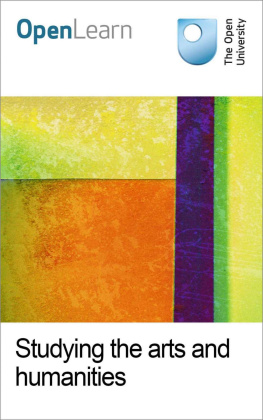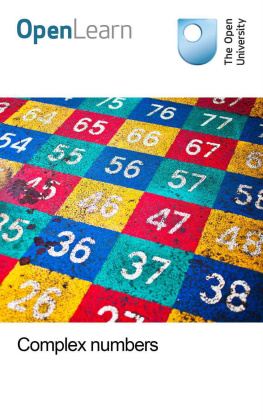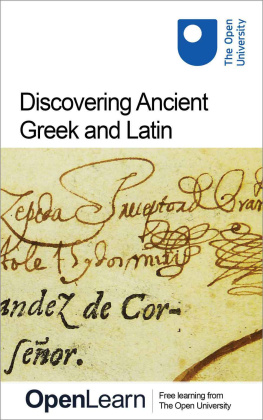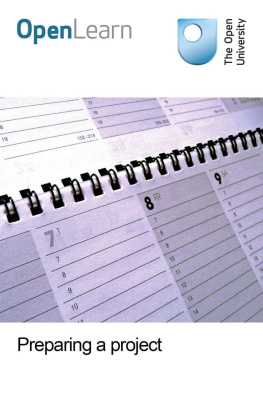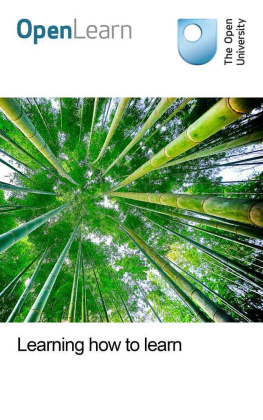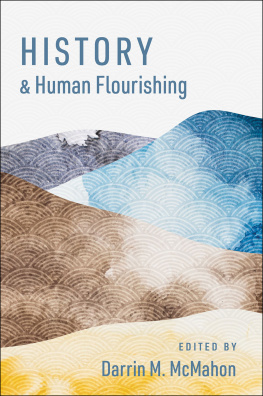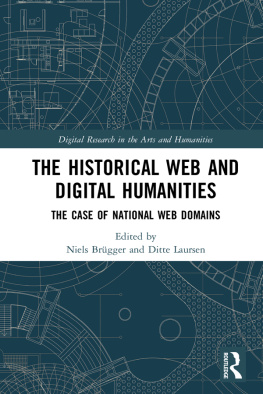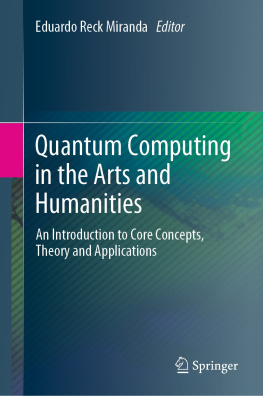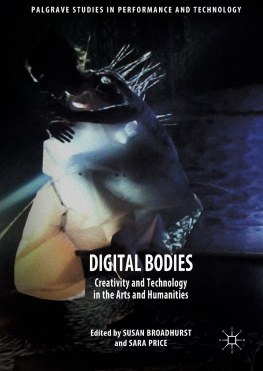University - Studying the arts and humanities
Here you can read online University - Studying the arts and humanities full text of the book (entire story) in english for free. Download pdf and epub, get meaning, cover and reviews about this ebook. year: 2016, genre: Religion. Description of the work, (preface) as well as reviews are available. Best literature library LitArk.com created for fans of good reading and offers a wide selection of genres:
Romance novel
Science fiction
Adventure
Detective
Science
History
Home and family
Prose
Art
Politics
Computer
Non-fiction
Religion
Business
Children
Humor
Choose a favorite category and find really read worthwhile books. Enjoy immersion in the world of imagination, feel the emotions of the characters or learn something new for yourself, make an fascinating discovery.
- Book:Studying the arts and humanities
- Author:
- Genre:
- Year:2016
- Rating:3 / 5
- Favourites:Add to favourites
- Your mark:
- 60
- 1
- 2
- 3
- 4
- 5
Studying the arts and humanities: summary, description and annotation
We offer to read an annotation, description, summary or preface (depends on what the author of the book "Studying the arts and humanities" wrote himself). If you haven't found the necessary information about the book — write in the comments, we will try to find it.
Studying the arts and humanities — read online for free the complete book (whole text) full work
Below is the text of the book, divided by pages. System saving the place of the last page read, allows you to conveniently read the book "Studying the arts and humanities" online for free, without having to search again every time where you left off. Put a bookmark, and you can go to the page where you finished reading at any time.
Font size:
Interval:
Bookmark:
About this free course
This free course provides a sample of Level 1 study in Arts and Humanities http://www.open.ac.uk/courses/find/arts-and-humanities.
This version of the content may include video, images and interactive content that may not be optimised for your device.
You can experience this free course as it was originally designed on OpenLearn, the home of free learning from The Open University http://www.open.edu/openlearn/history-the-arts/studying-the-arts-and-humanities/content-section-0
There youll also be able to track your progress via your activity record, which you can use to demonstrate your learning.
Copyright 2016 The Open University
Intellectual property
Unless otherwise stated, this resource is released under the terms of the Creative Commons Licence v4.0 http://creativecommons.org/licenses/by-nc-sa/4.0/deed.en_GB. Within that The Open University interprets this licence in the following way: www.open.edu/openlearn/about-openlearn/frequently-asked-questions-on-openlearn. Copyright and rights falling outside the terms of the Creative Commons Licence are retained or controlled by The Open University. Please read the full text before using any of the content.
We believe the primary barrier to accessing high-quality educational experiences is cost, which is why we aim to publish as much free content as possible under an open licence. If it proves difficult to release content under our preferred Creative Commons licence (e.g. because we cant afford or gain the clearances or find suitable alternatives), we will still release the materials for free under a personal end-user licence.
This is because the learning experience will always be the same high quality offering and that should always be seen as positive even if at times the licensing is different to Creative Commons.
When using the content you must attribute us (The Open University) (the OU) and any identified author in accordance with the terms of the Creative Commons Licence.
The Acknowledgements section is used to list, amongst other things, third party (Proprietary), licensed content which is not subject to Creative Commons licensing. Proprietary content must be used (retained) intact and in context to the content at all times.
The Acknowledgements section is also used to bring to your attention any other Special Restrictions which may apply to the content. For example there may be times when the Creative Commons Non-Commercial Sharealike licence does not apply to any of the content even if owned by us (The Open University). In these instances, unless stated otherwise, the content may be used for personal and non-commercial use.
We have also identified as Proprietary other material included in the content which is not subject to Creative Commons Licence. These are OU logos, trading names and may extend to certain photographic and video images and sound recordings and any other material as may be brought to your attention.
Unauthorised use of any of the content may constitute a breach of the terms and conditions and/or intellectual property laws.
We reserve the right to alter, amend or bring to an end any terms and conditions provided here without notice.
All rights falling outside the terms of the Creative Commons licence are retained or controlled by The Open University.
Head of Intellectual Property, The Open University
978-1-4730-1395-7 (.kdl)
978-1-4730-0627-0 (.epub)
This course is an introduction to studying the arts and humanities. It takes you through a series of exercises designed to develop your approach to study and learning at a distance and improve your confidence as an independent learner.
This OpenLearn course provides a sample of Level 1 study in Arts and Humanities.
After studying this course, you should be able to:
- understand more clearly the reasons for studying the arts and humanities
- demonstrate an awareness of the basic skills and techniques for studying at a distance.
This course is an introduction to studying the arts and humanities. It takes you through a series of exercises designed to develop your approach to study and learning at a distance and improve your confidence as an independent learner.
So this introductory course will serve several purposes
- First of all, they will give you the experience of working through study material on your own.
- Secondly, this material will introduce you to, or renew your acquaintance with, the tools of study that you will need.
We also want to introduce you to the distance-teaching technique used in this course, which is to offer you a point at which to stop so that you can work out your response to a question, and then read our discussion. The stopping-point is signalled as an Exercise, followed by a pause, and then Discussion. We hope that this system will give you the feel of a dialogue such as you would have in a tutorial, with tutor and other students. You will get the best results if you actively engage in the process: though it may seem tempting to read straight on to our discussion, you will be a more effective learner if you work out your response first, because you will then have something on which to measure our discussion.
We suggest also that at this point you equip yourself with a note book to use to complete exercises. Alternatively, you may wish to use the course Forum to record your responses.
For the first dialogue, then, let me ask you a question
Why have you chosen this course?
Please jot down your reasons for choosing this course, either in your notebook or in the course Forum. We suggest you list six points, but it doesn't matter if you record less than six reasons or whether you want to write more. Remember, there are no wrong or right answers here!
So, now let us return to your reasons for choosing this course. First, though, you may like to know of some of the reasons given by learners registered with the OU to study the arts and humanities:
I was good at English and history at school. I think I'll enjoy studying them further.
I never did all I could at school and I wasted my time. Now that I have a chance to do some study I want to take it.
I've spent some years doing a job which does not particularly interest me, and I need some kind of intellectual challenge. I want to meet other students, too.
I have always promised myself that I would find out what arts subjects are all about, and now I have the time.
How do these reasons compare with the ones you wrote down? If they make you want to add to your own list, please do so. We want you to end up with a list of no more than six reasons that begin to identify why you have chosen to study the arts. Once you have your list, please go on to the next exercise
Record your six reasons, but this time try to place your reasons in rank order, beginning with the reasons that seem most important to you.
Let us continue this process of thinking, writing and sifting. As we have suggested, many students approaching study have worries about what lies ahead. Let's look at some worries that students have expressed to us. We will give you six statements; identify any that apply to you on a list, and add others you may have. Identifying these helps towards a constructive assessment of your own situation. Again, rank them in order:
Font size:
Interval:
Bookmark:
Similar books «Studying the arts and humanities»
Look at similar books to Studying the arts and humanities. We have selected literature similar in name and meaning in the hope of providing readers with more options to find new, interesting, not yet read works.
Discussion, reviews of the book Studying the arts and humanities and just readers' own opinions. Leave your comments, write what you think about the work, its meaning or the main characters. Specify what exactly you liked and what you didn't like, and why you think so.

